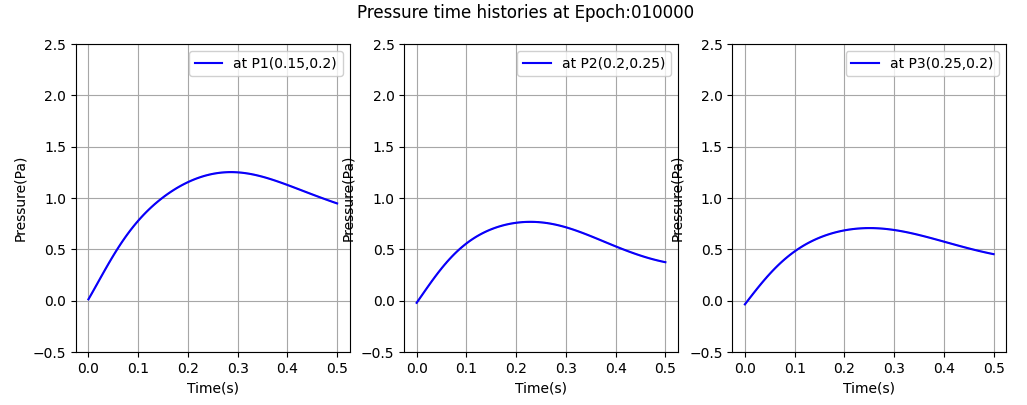Introduction
In my previous post, I summarized the learning and inference results from PINNs for Laminar Flow (laminar flow) in the unsteady state, using the governing equations of ST (Stress Tensor) form. The results were different from those in the referenced paper.
Sources
- PINN-laminar-flow/PINN_unsteady - The paper and github, which I have been referring to as a source of information. to evaluate the results of my own implementation, I compared them to Figures 7 and 8 in this paper.
Results
Learning status
ST form
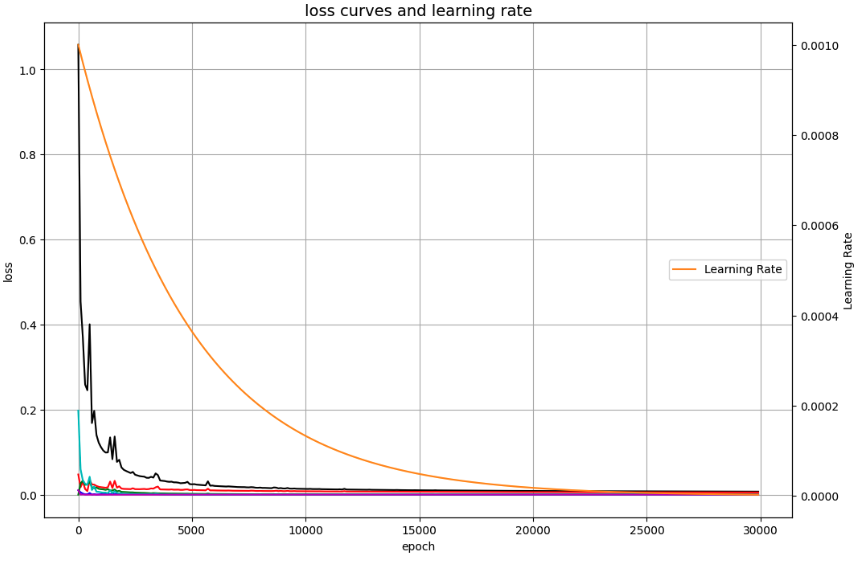
VP form
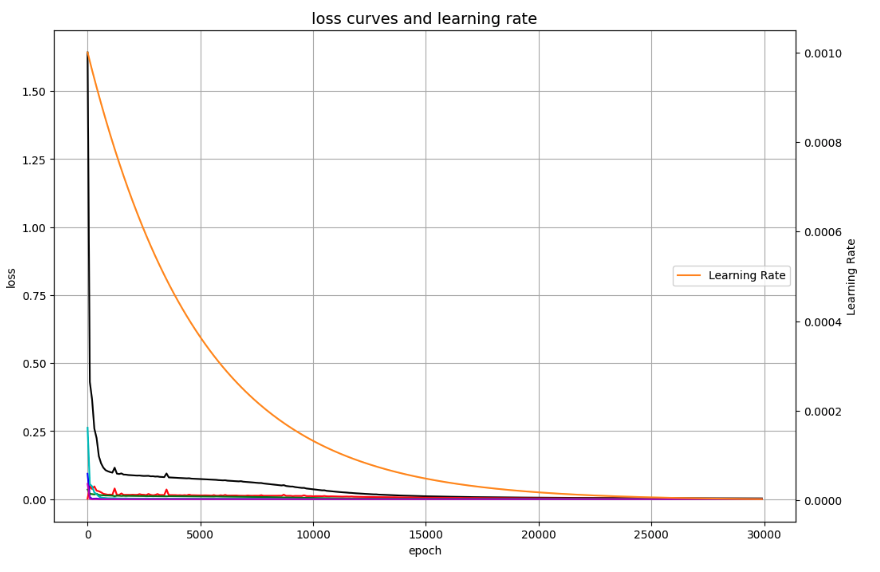
Pressure Transition
ST form
10,000 epoch

15,000 epoch

25,000 epoch

VP form
10,000 epoch
15,000 epoch
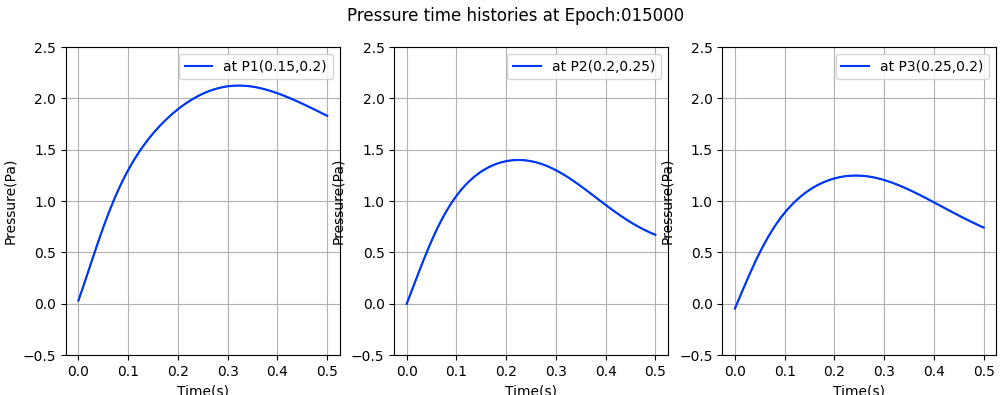
25,000 epoch
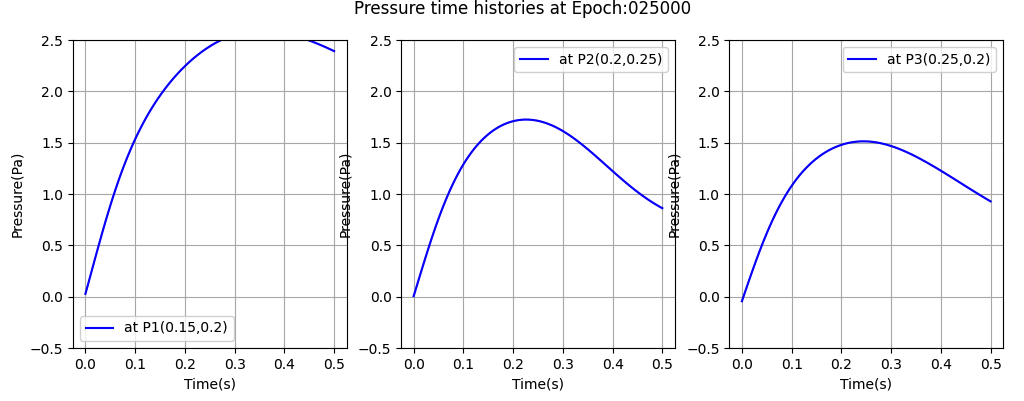
Velocity and pressure fields
ST form
at 0.3 sec later in 10,000 epoch
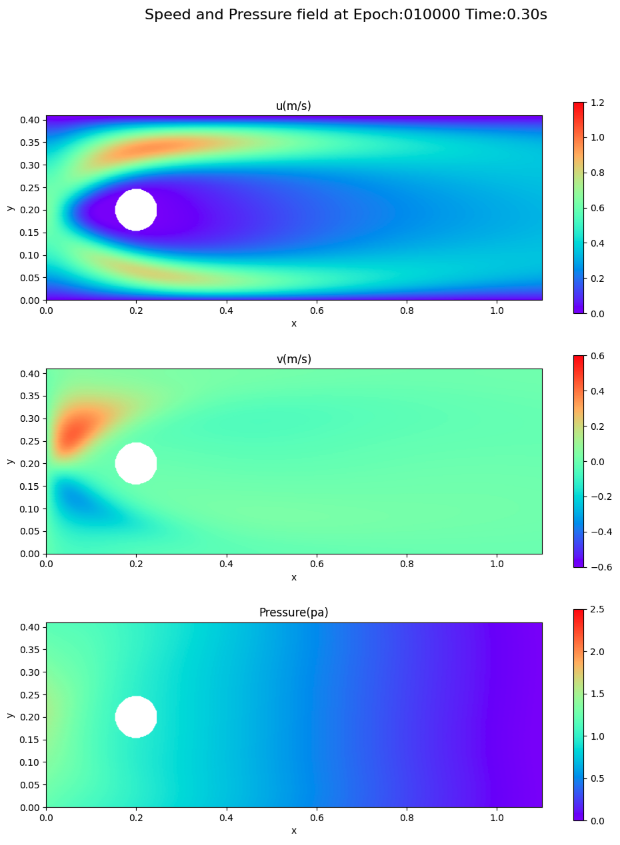
at 0.5 sec later in 10,000 epoch
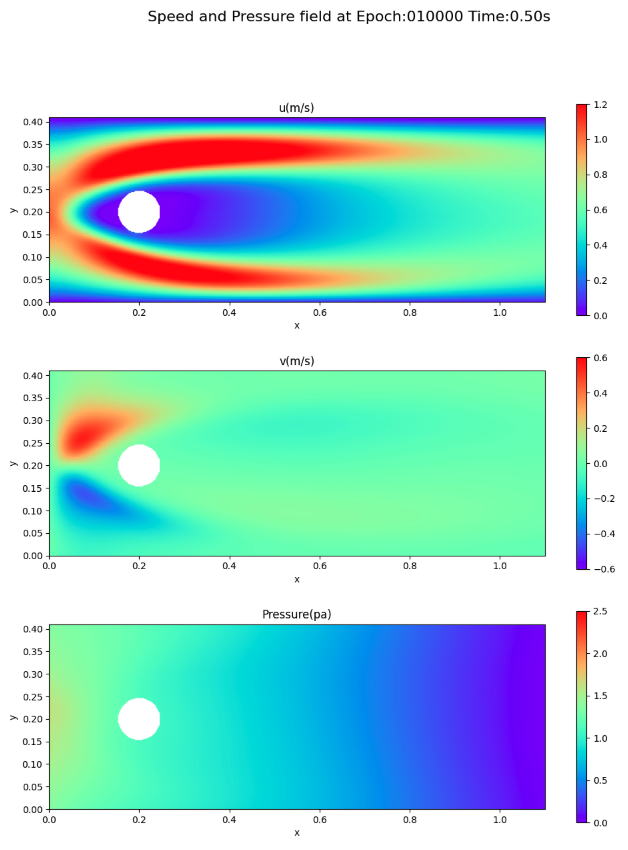
at 0.3 sec later in 25,000 epoch
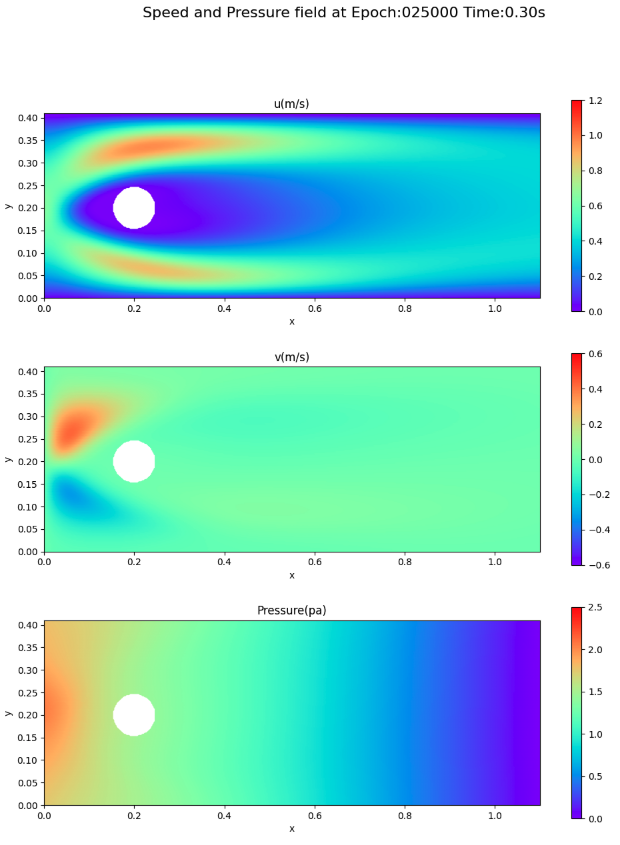
at 0.5 sec later in 25,000 epoch
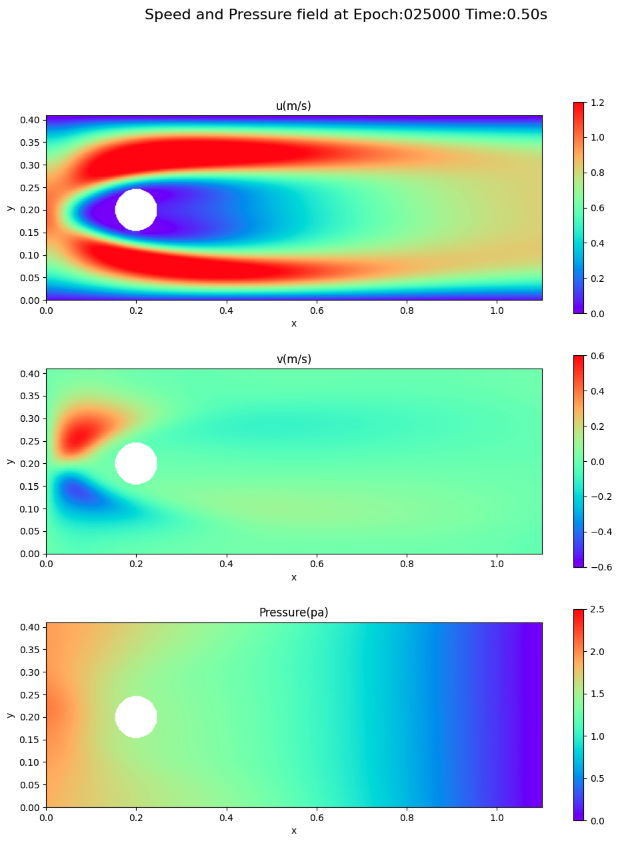
VP form
at 0.3 sec later in 10,000 epoch
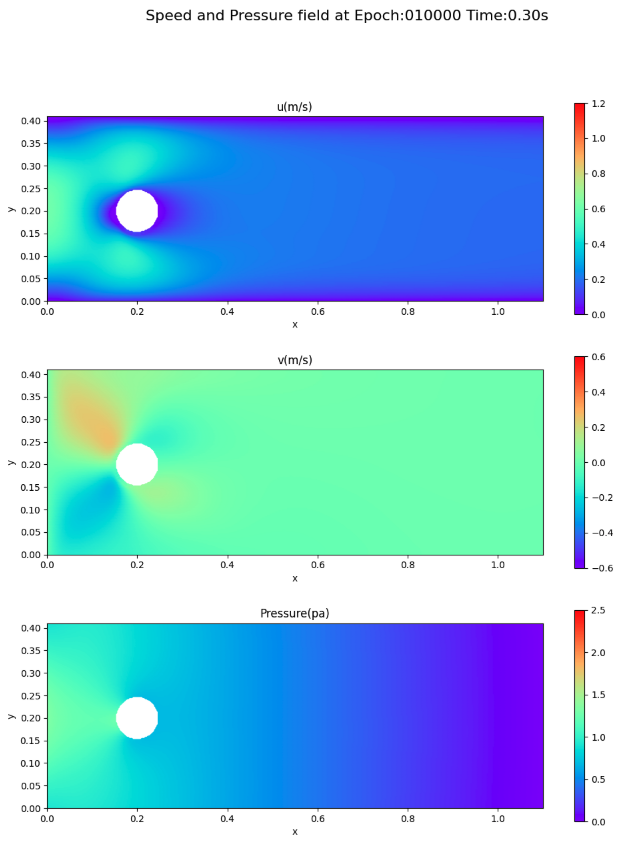
at 0.5 sec later in 10,000 epoch
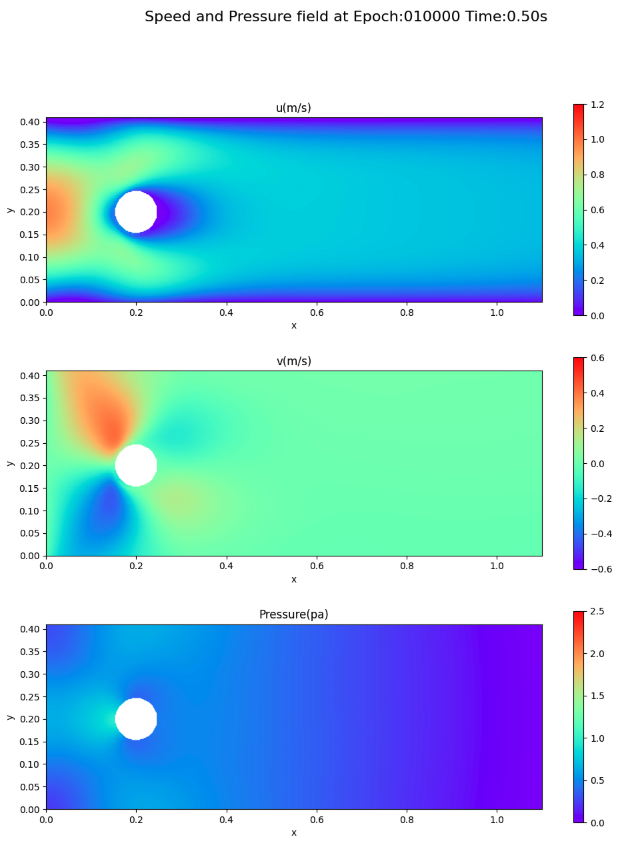
at 0.3 sec later in 25,000 epoch
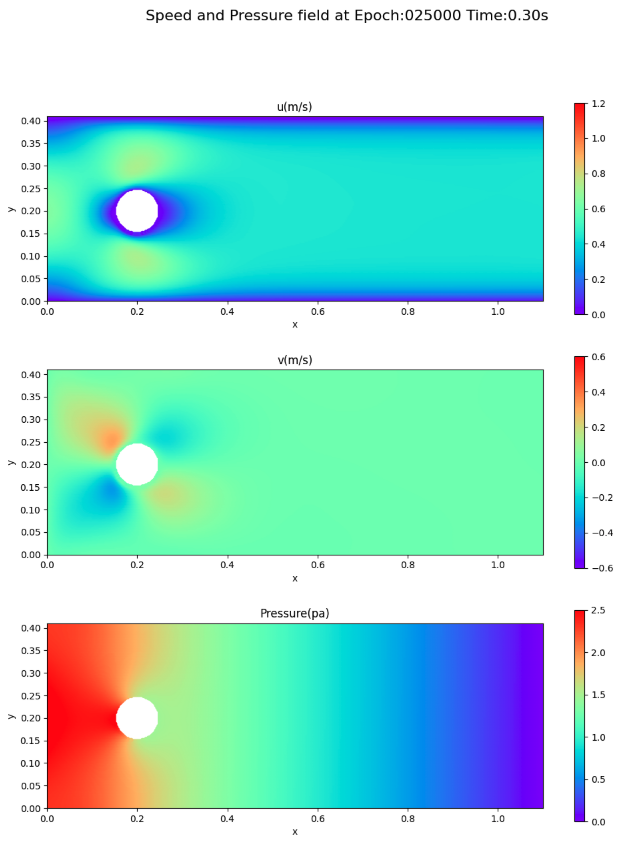
at 0.5 sec later in 25,000 epoch
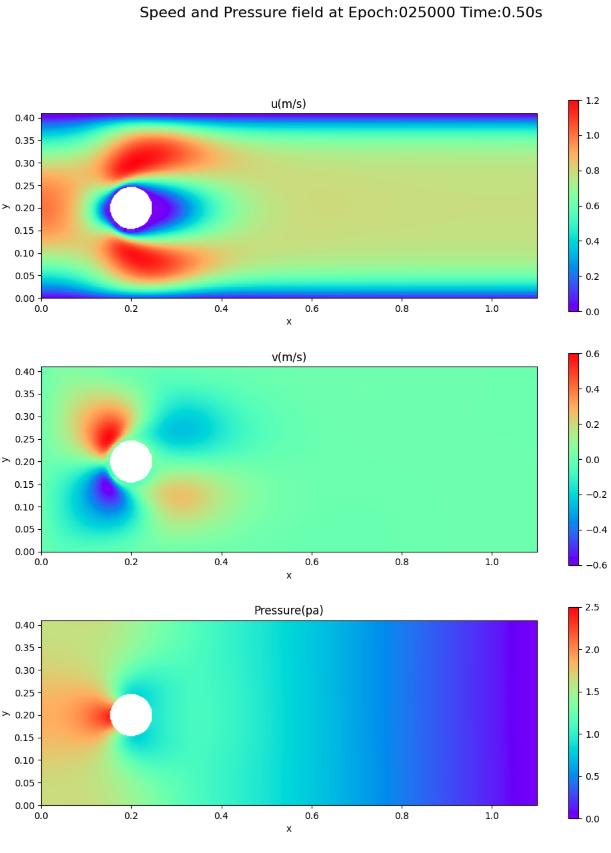
Summary
Compared to Figures 6 and 7 in Sources 1., the following can be qualitatively said.
- The model learned with VP fom governing equations seems to be closer to the figure in Source 1.
- The model I have obtained (by learning) is in a state of high pressure after 0.5 seconds for nothing of VP or ST form.
- The more I progress in learning (more epochs), the higher the pressure.
I have reviewed the governing equations and boundary conditions many times over the past week to determine the cause of the above, but the cause remains unknown.
I would like to leave this problem as it is and try to find the next issue.
